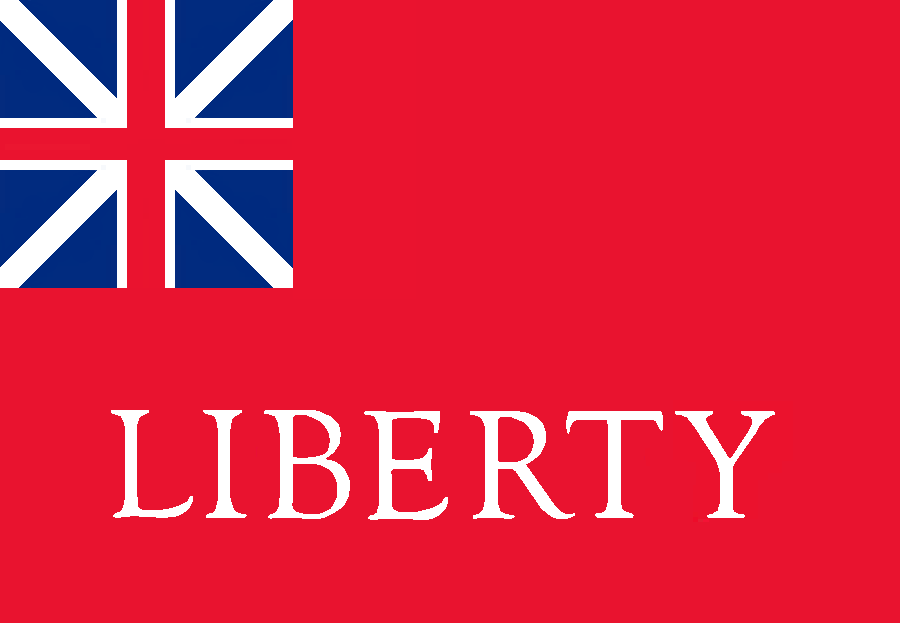


 The Liberty flag was simply the addition of the word, Liberty, to the British Red Ensign.
The Liberty flag was simply the addition of the word, Liberty, to the British Red Ensign.
 On 20 July 1775, General Charles Lee sent a letter to Silas Deane in which he suggested that every regiment in the Continental Army should carry simple flags of a solid color "embroider'd with the word liberty" added to them as a motto. Some researchers have construed this reference to mean that the word liberty was added to the British Red Ensign. But the original source, published in 1893 by Worthington Chauncey Ford in his book, Correspondence And Journals Of Samuel Blachley Webb, does not specifically state that it was the British Red Ensign that was used as the basis for the Liberty Flag. It is just as plausible that the first Liberty Flags were simple red fields with the word LIBERTY on it.
On 20 July 1775, General Charles Lee sent a letter to Silas Deane in which he suggested that every regiment in the Continental Army should carry simple flags of a solid color "embroider'd with the word liberty" added to them as a motto. Some researchers have construed this reference to mean that the word liberty was added to the British Red Ensign. But the original source, published in 1893 by Worthington Chauncey Ford in his book, Correspondence And Journals Of Samuel Blachley Webb, does not specifically state that it was the British Red Ensign that was used as the basis for the Liberty Flag. It is just as plausible that the first Liberty Flags were simple red fields with the word LIBERTY on it.
 One of the contemporary references to this flag describes it simply as a flag with the motto "Liberty" on it. The flag was a solid red field on which white lettering spelled out the single word: 'Liberty.' The town of Huntingdon, New York is claimed to have flown such a 'Liberty' flag on 23 July 1776 when the town received the news that a Declaration of Independence had been signed by the delegates meeting in the Continental Congress. The flag was then carried by the Suffolk County Militia in the Battle of Long Island, during which it was captured by the Hessians. Speaking of the aftermath of the Battle of Long Island on 27 August 1776, Adjutant General Major Carl Leopold Baurmeister, a Hessian leader wrote that "We came into possession of eleven enemy flags with the motto 'Liberty'." He did not specify that those flags were altered British Red Ensigns.
One of the contemporary references to this flag describes it simply as a flag with the motto "Liberty" on it. The flag was a solid red field on which white lettering spelled out the single word: 'Liberty.' The town of Huntingdon, New York is claimed to have flown such a 'Liberty' flag on 23 July 1776 when the town received the news that a Declaration of Independence had been signed by the delegates meeting in the Continental Congress. The flag was then carried by the Suffolk County Militia in the Battle of Long Island, during which it was captured by the Hessians. Speaking of the aftermath of the Battle of Long Island on 27 August 1776, Adjutant General Major Carl Leopold Baurmeister, a Hessian leader wrote that "We came into possession of eleven enemy flags with the motto 'Liberty'." He did not specify that those flags were altered British Red Ensigns.
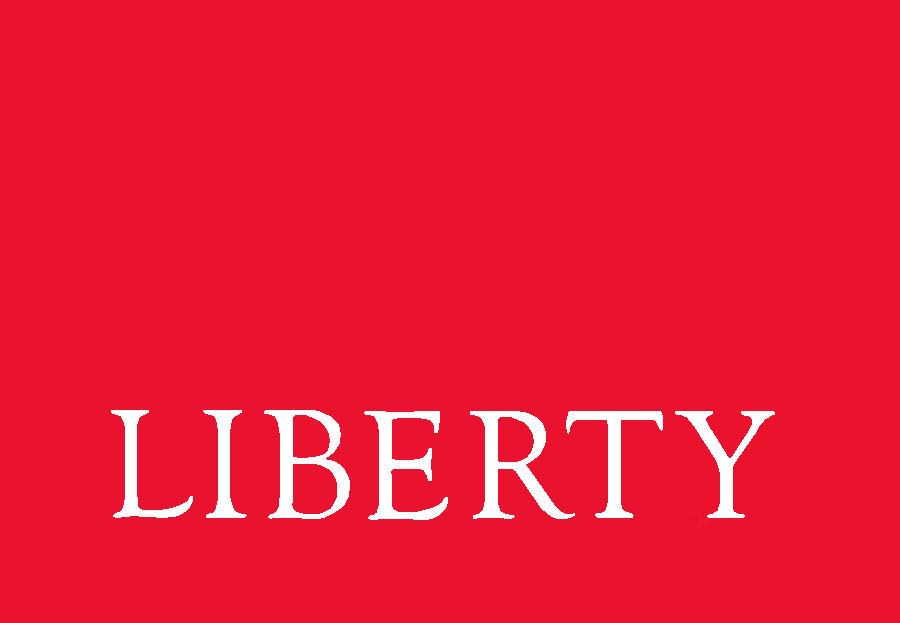
 The Schenectady County Historical Society maintains the remnant of an original Liberty Flag. The faded color of this flag suggests that it might have been a bluish-green color. The material appears to be silk, and white silk letters had been sewn on to one side of the flag. It would appear that the Patriots, in their effort to obtain flags for their unit would use whatever might have been available at the time and place. If this flag was indeed a bluish-green color with white lettering, the intent was probably to proclaim liberty moreso than get the colors correct.
The Schenectady County Historical Society maintains the remnant of an original Liberty Flag. The faded color of this flag suggests that it might have been a bluish-green color. The material appears to be silk, and white silk letters had been sewn on to one side of the flag. It would appear that the Patriots, in their effort to obtain flags for their unit would use whatever might have been available at the time and place. If this flag was indeed a bluish-green color with white lettering, the intent was probably to proclaim liberty moreso than get the colors correct.
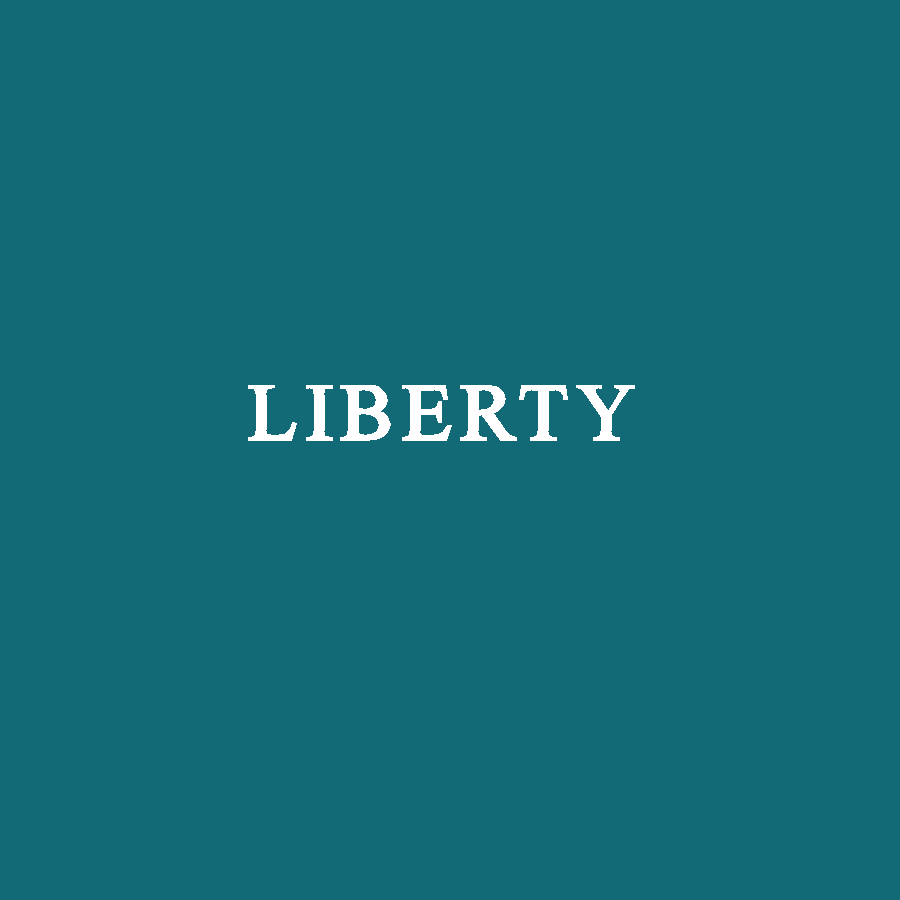
 In the Autumn of 1775, Amos Doolittle published four engravings of the battles of Lexington and Concord. The engravings by Doolittle were not the first to depict the opening shots of the American Revolutionary War, but they were the only ones produced by a contemporary American who had witnessed the events. One of the engravings was titled: The Retreat From Concord To Lexington Of The Army Of Wild Irish Asses defeated By The Brave American Militia; it was published on 19 June 1775, just two months after the battle. Depicted on the engraving is a flag being carried by the American Patriots that consisted of the British Union flag of 1707 on which the word Liberty had either been painted or sewn. That depiction of the flag in this engraving is unique because it was more usual for the words Liberty and/or Union to be applied to the British Red Ensign. It is possible that the flag that Amos Doolittle saw was in fact the British Red Ensign with the British Union in the canton and the word "Liberty" applied to the field. But it is just as possible that an actual British Union had been altered by the addition of the word "Liberty" and seen by Doolittle.
In the Autumn of 1775, Amos Doolittle published four engravings of the battles of Lexington and Concord. The engravings by Doolittle were not the first to depict the opening shots of the American Revolutionary War, but they were the only ones produced by a contemporary American who had witnessed the events. One of the engravings was titled: The Retreat From Concord To Lexington Of The Army Of Wild Irish Asses defeated By The Brave American Militia; it was published on 19 June 1775, just two months after the battle. Depicted on the engraving is a flag being carried by the American Patriots that consisted of the British Union flag of 1707 on which the word Liberty had either been painted or sewn. That depiction of the flag in this engraving is unique because it was more usual for the words Liberty and/or Union to be applied to the British Red Ensign. It is possible that the flag that Amos Doolittle saw was in fact the British Red Ensign with the British Union in the canton and the word "Liberty" applied to the field. But it is just as possible that an actual British Union had been altered by the addition of the word "Liberty" and seen by Doolittle.
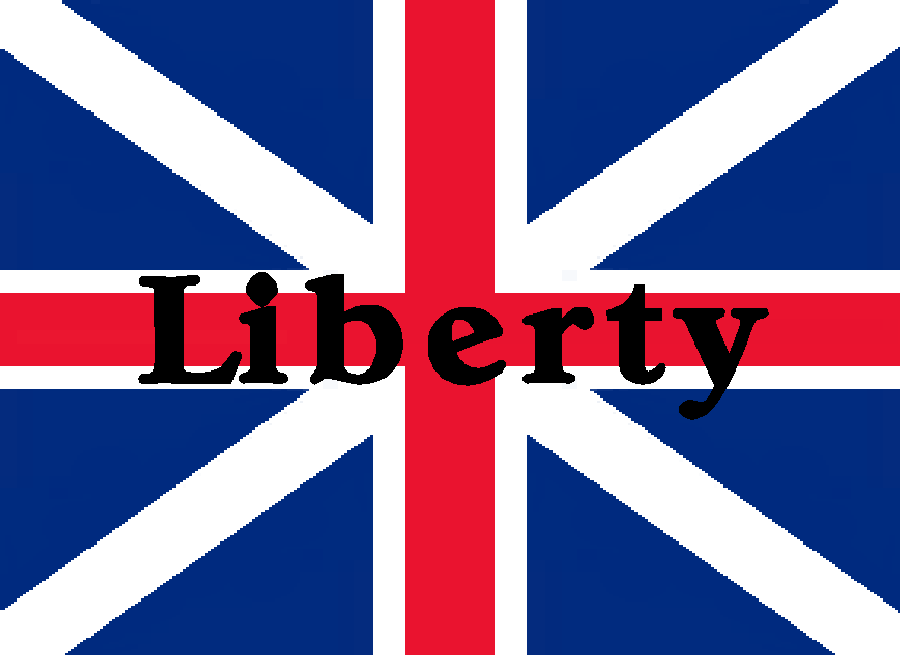
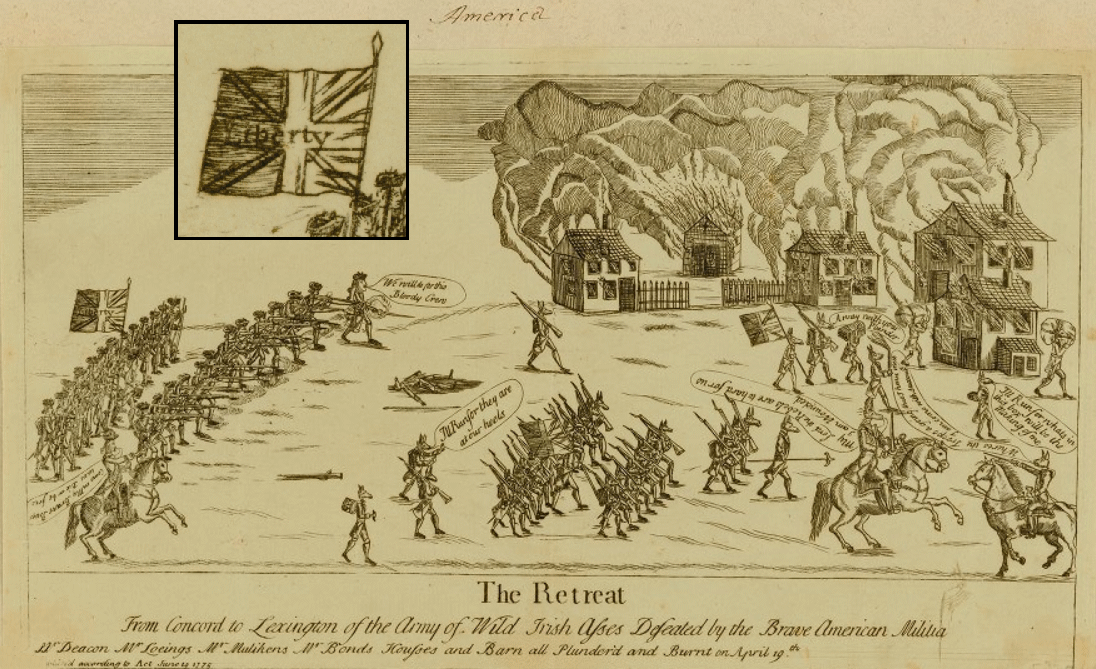
 In some cases, the addition of the word LIBERTY might have been accomplished by sewing the letters on by embroidery, while in others the letters might have been painted on.
In some cases, the addition of the word LIBERTY might have been accomplished by sewing the letters on by embroidery, while in others the letters might have been painted on.
 Since so few original flags from the period of the American Revolutionary War exist to the present day, there is no way to determine if the lettering was black or white or some other color. More than likely, the lettering on any particular flag would have been painted in whatever paint was readily available at the time, or embroidered in whatever thread or yarn was available.
Since so few original flags from the period of the American Revolutionary War exist to the present day, there is no way to determine if the lettering was black or white or some other color. More than likely, the lettering on any particular flag would have been painted in whatever paint was readily available at the time, or embroidered in whatever thread or yarn was available.
 What might be stated more confidently is that the lettering added to the flags would probably have been in the Caslon typeface, since that was the common font in use at the time. The Caslon font was created by William Caslon I in 1722. Considered to be the first typeface of truly English derivation, the Caslon font had similarities of, if not having been based upon, the Dutch Baroque fonts. It was a serif style font, meaning that the ends of the strokes within individual letters bore small lines, often at right angles to the strokes. A sans-serif font, which means "without serifs", and is a type of font that is sometimes utilized for the lettering on flags devised by modern artists. But it can be argued unequivocally, that sans-serif fonts were not utilized in the lettering on flags from the American Revolutionary War period simply because of the fact that the first sans-serif font was not created until the year 1816. That font was created by William Caslon IV, a descendant of the first William Caslon.
What might be stated more confidently is that the lettering added to the flags would probably have been in the Caslon typeface, since that was the common font in use at the time. The Caslon font was created by William Caslon I in 1722. Considered to be the first typeface of truly English derivation, the Caslon font had similarities of, if not having been based upon, the Dutch Baroque fonts. It was a serif style font, meaning that the ends of the strokes within individual letters bore small lines, often at right angles to the strokes. A sans-serif font, which means "without serifs", and is a type of font that is sometimes utilized for the lettering on flags devised by modern artists. But it can be argued unequivocally, that sans-serif fonts were not utilized in the lettering on flags from the American Revolutionary War period simply because of the fact that the first sans-serif font was not created until the year 1816. That font was created by William Caslon IV, a descendant of the first William Caslon.

